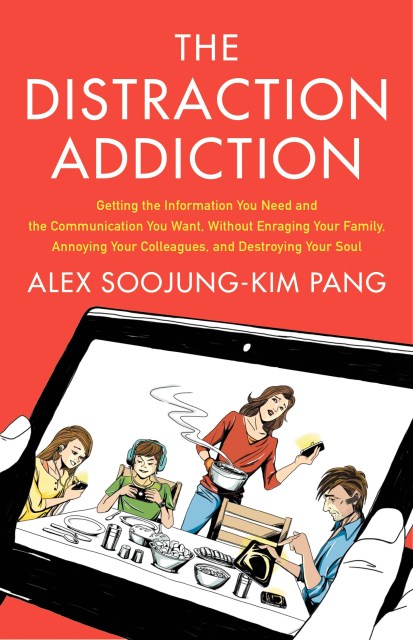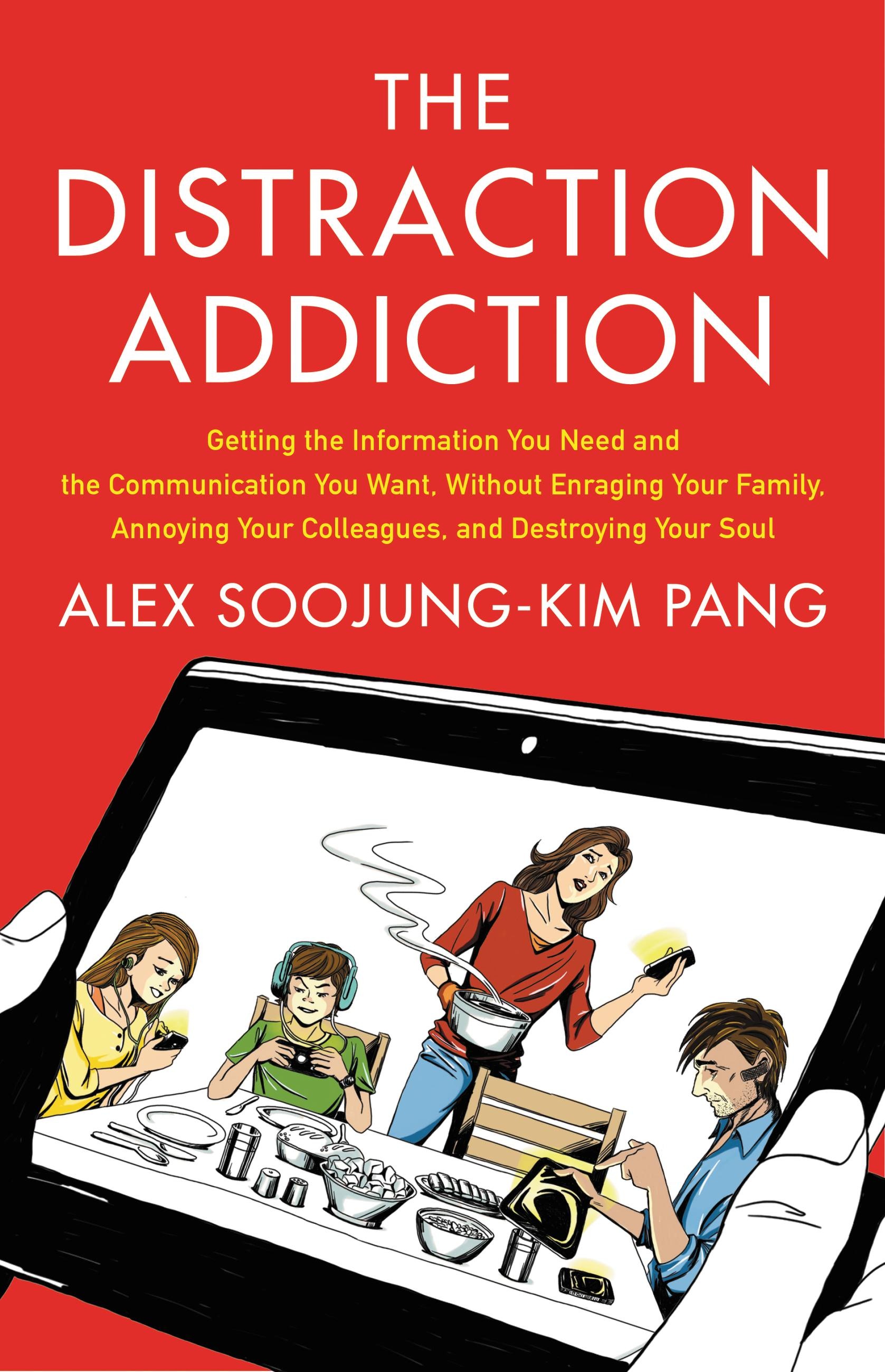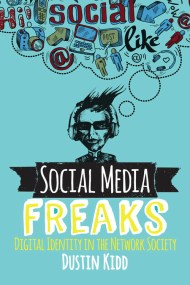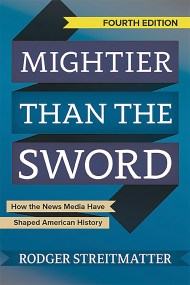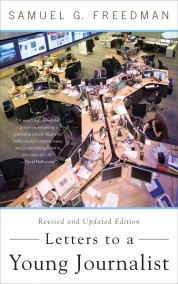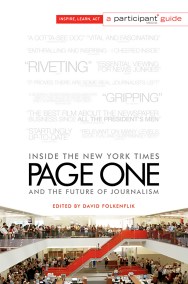Promotion
Free shipping on orders $45+ Shop Now.
The Distraction Addiction
Getting the Information You Need and the Communication You Want, Without Enraging Your Family, Annoying Your Colleagues, and Destroying Your Soul
Contributors
Formats and Prices
Price
$37.00Price
$47.00 CADFormat
Format:
- Hardcover $37.00 $47.00 CAD
- ebook $4.00 $19.99 CAD
This item is a preorder. Your payment method will be charged immediately, and the product is expected to ship on or around August 20, 2013. This date is subject to change due to shipping delays beyond our control.
Also available from:
The question of our time: can we reclaim our lives in an age that feels busier and more distracting by the day?
We’ve all found ourselves checking email at the dinner table, holding our breath while waiting for Outlook to load, or sitting hunched in front of a screen for an hour longer than we intended.
Mobile devices and the web have invaded our lives, and this is a big idea book that addresses one of the biggest questions of our age: can we stay connected without diminishing our intelligence, attention spans, and ability to really live? Can we have it all?
Alex Soojung-Kim Pang, a renowned Stanford technology guru, says yes. The Distraction Addiction is packed with fascinating studies, compelling research, and crucial takeaways. Whether it’s breathing while Facebook refreshes, or finding creative ways to take a few hours away from the digital crush, this book is about the ways to tune in without tuning out.
We’ve all found ourselves checking email at the dinner table, holding our breath while waiting for Outlook to load, or sitting hunched in front of a screen for an hour longer than we intended.
Mobile devices and the web have invaded our lives, and this is a big idea book that addresses one of the biggest questions of our age: can we stay connected without diminishing our intelligence, attention spans, and ability to really live? Can we have it all?
Alex Soojung-Kim Pang, a renowned Stanford technology guru, says yes. The Distraction Addiction is packed with fascinating studies, compelling research, and crucial takeaways. Whether it’s breathing while Facebook refreshes, or finding creative ways to take a few hours away from the digital crush, this book is about the ways to tune in without tuning out.
Genre:
-
"Amusing and edifying.... THE DISTRACTION ADDICTION is not framed as a self-help book...It's a thoughtful examination of the perils of our computing overdose and a historical overview of how technological advances change consciousness." -- Washington Post
-
"A perceptive new study of how best to cope with the relentless interruptions presented by digital life...Pang persuasively and carefully constructs a remedy he calls 'contemplative computing'... to think clearly and calmly, Pang offers original and often inspired ideas." -- San Francisco Chronicle
-
"Skeptical without pandering to technophobia or neuroscience.... The Distraction Addiction brims with suggestions for how to embrace 'contemplative computing,' a mindful approach to digital technology... Instead of shunning the technological in pursuit of the mythical authentic experience, Pang wants to clean up the mess it created." -- The New Yorker
-
"Pang's strength is his ability to weave together previously written-about ideas from such varied sources as histories of science (e.g., Darwin's daily walk) and Silicon Valley propaganda (the 'digital Sabbath')." -- Cleveland Plain Dealer
-
"An elegant tour through current neuroscience and an examination of the nature of attention. Pang's tome is a valuable resource for anyone seeking to take control of his or her digital life, and it's a great primer on the interplay between mind and tech." -- Publishers Weekly
-
"Pang reminds us that our brains are still capable of feats far beyond the reach of computers." -- Mother Jones
-
"Pang implores us to use technology more mindfully in this thoughtful book that is rich in research and anecdote. Perfect for readers who enjoy books on the nature of attention such as Maggie Jackson and Bill McKibben's Distracted: The Erosion of Attention and the Coming Dark Age and on the behavior of human-computer interaction." -- Library Journal
-
"Pang bolsters his advice with anecdotes of intellectual breakthroughs by great thinkers of the past, coupled with interviews with present-day scientists and techsavvy professionals. These accounts, including the surprising use of social media by Buddhist monks and a lengthy analysis of Darwin's method of reflection through walking, are the best part of Pang's book, placing today's current tech "addiction" into a broader context of human history, development, and philosophical insight." -- Booklist
-
"Pang's notion of mindful, or contemplative, computing is useful." -- TechCrunch
-
"A wise, urbane, funny, and delightfully deep book. This book is about much more than distraction and addiction in the smartphone age. It's about living life wholly and fully by paying deep, thoughtful attention to our tools and our bodies, and to the people we love. This book speaks to modern times, but its message is timeless." -- Michael Chorost, author of World Wide Mind: The Coming Integration of Humanity, Machines, and the Internet
-
"The era of the smartphone and the iPad seems to present us with a deeply unappealing choice: either we can resign ourselves to a life of tech-induced anxiety and distraction, or we can renounce the many benefits of the web-connected world. In this important and hopeful book, Alex Pang explains that there's a third possibility. Using the approach he calls "contemplative computing," we can harness technology to foster, not disrupt, attention and calm -- and thereby use our gadgets in the service of a meaningful life, rather than letting them use us." -- Oliver Burkeman, Guardian columnist and author of The Antidote: Happiness for People Who Can't Stand Positive Thinking
-
"Does technology rule you? Or do you rule your technology? The Distraction Addiction is a how-to guide for staying sane, balanced, and intentional in an age of constant digital distraction. If you want your phone, facebook, email, and all the rest to make your life richer without making it more scattered, this is the book for you." -- Ramez Naam, author of The Infinite Resource: The Power of Ideas on a Finite Planet
-
"Time starved? Distracted by the immediate? Tossing in an ocean of swirling information? No landfall in sight? Need a lodestar; a pilot, perhaps a Zen master? Turn to Alex Soojung-Kim Pang: he has charted these waters. With Pang's help you can surprise yourself. The Distraction Addiction is an intelligent, entertaining and essential guide to navigation in our techno-times." -- Peter C. Whybrow, Director of the Semel Institute for Neuroscience and Human Behavior at UCLA, and author of American Mania: When More is Not Enough
-
"The Distraction Addiction is guaranteed to distract and provoke us from the normal clichés of the day. It stretches our understanding of technological affordances and the extended mind, bringing into reality what we usually think of philosophically. Read this book and be surprised and delighted by its deeply humanist sensibilities." -- John Seely Brown, co-author of The Social Life of Information
- On Sale
- Aug 20, 2013
- Page Count
- 304 pages
- Publisher
- Little, Brown and Company
- ISBN-13
- 9780316208260
Newsletter Signup
By clicking ‘Sign Up,’ I acknowledge that I have read and agree to Hachette Book Group’s Privacy Policy and Terms of Use
